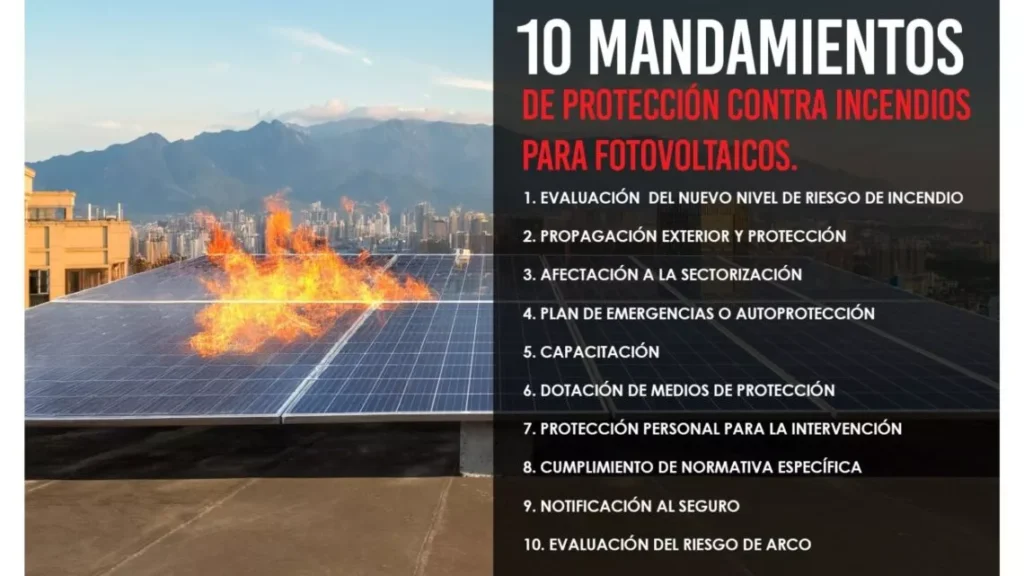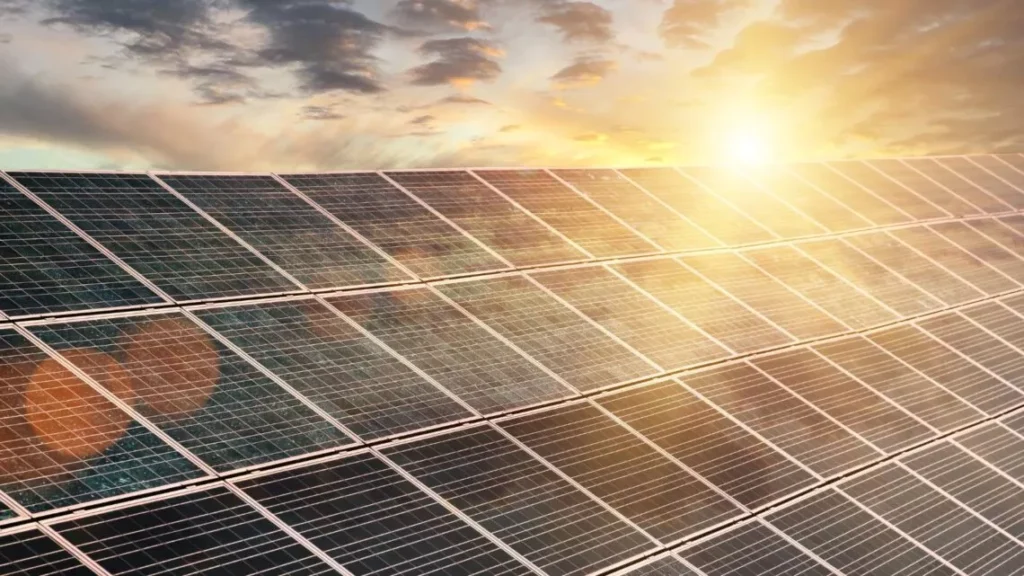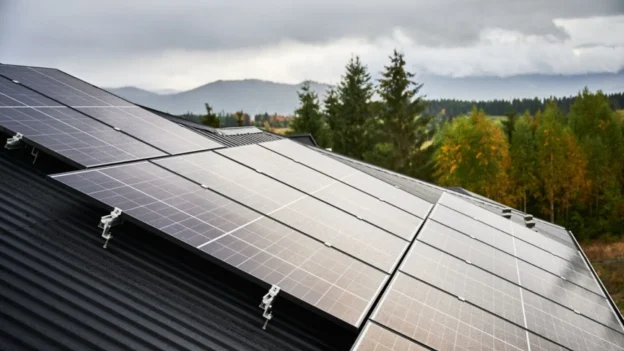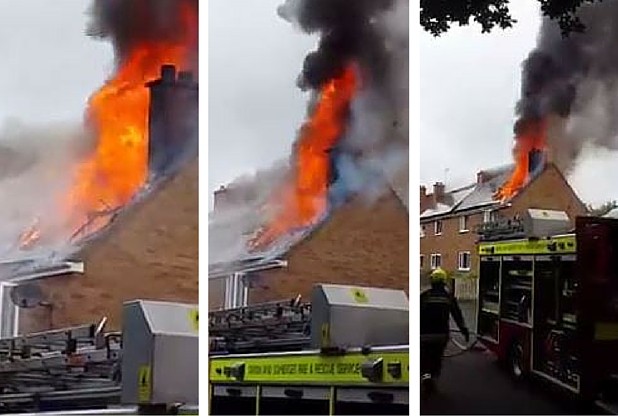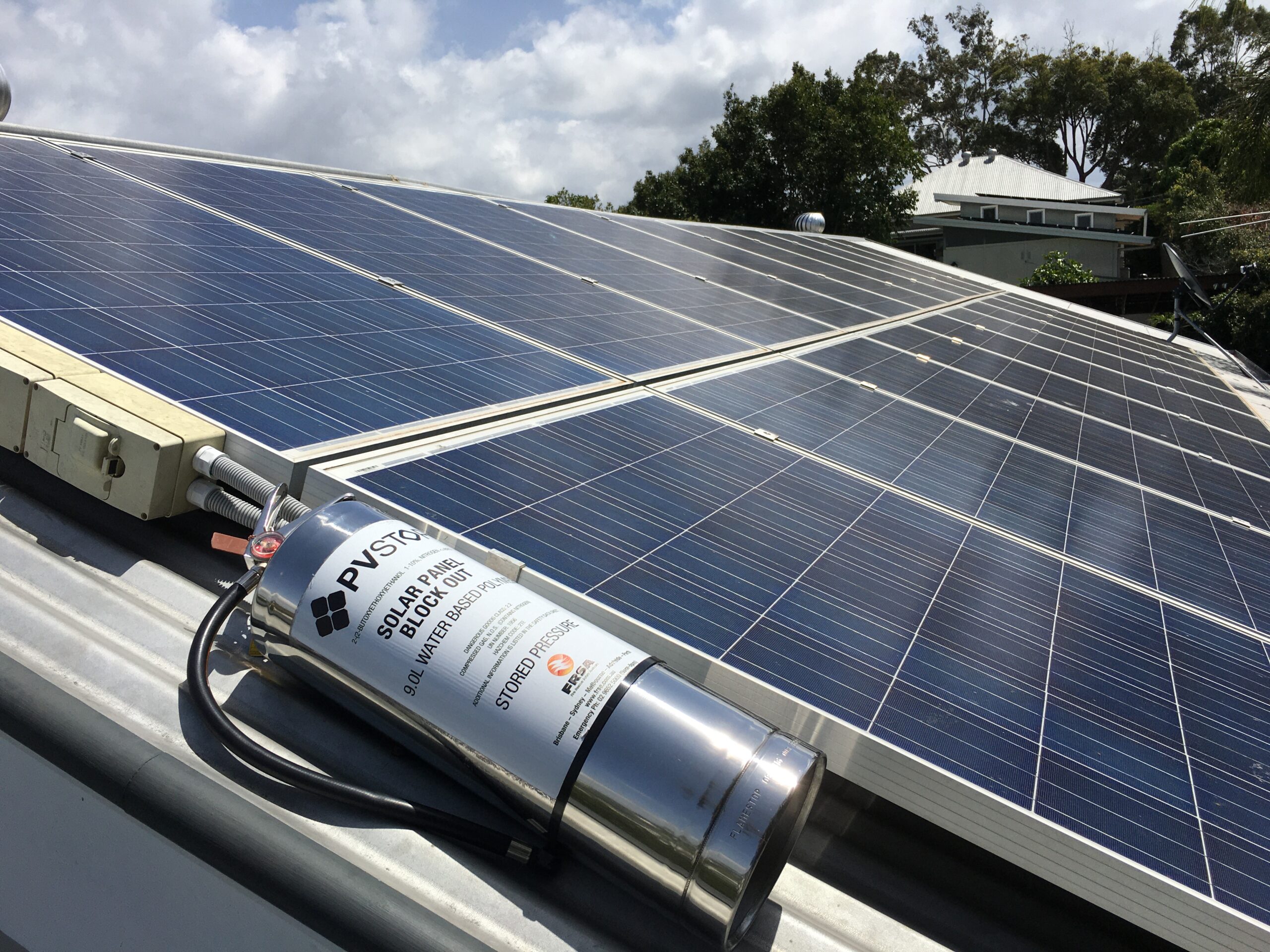The growth of photovoltaic installations poses challenges in fire safety. A very serious mistake is not to recognise panels as an installation or accessible roofs as work areas, which prevents the adoption of mandatory measures and, therefore, generates non-compliance and problems for all actors in the sector. In addition, the lack of protection affects the sustainability and image of the sector.
The 10 Compliance Failures That Could Destroy Your Solar Investment
By Antonio Molina, Technical & Product Development Director, Extinction Against Fire and Safety
You invested in solar panels to do the right thing. Clean energy. Lower bills. Sustainability.
But here’s what no one told you during the sales pitch: installing photovoltaic systems on your roof fundamentally changes your building’s risk profile. And most installations get it wrong.
Not a little wrong. Dangerously wrong.
The growth of solar energy is transforming our world. But it’s also creating a compliance crisis that puts lives, property, and entire businesses at risk. The uncomfortable truth? Most solar installations fail to meet mandatory fire safety requirements – not because owners are careless, but because the complexity of regulations leaves critical gaps unaddressed.
This isn’t about paperwork. It’s about whether your building burns down, whether emergency responders get electrocuted trying to save it, and whether your insurance company walks away when you need them most.
Here are the 10 critical compliance failures happening right now – and what they mean for you.
1. The Risk Assessment That Never Happened
What’s missing: A proper evaluation of how solar panels change your building’s fire risk profile.
Why it matters: Installing panels on industrial roofs increases fire risk through combustible materials and DC power generation. Without assessing this new risk level, your installation operates outside required safety parameters – which means you’re non-compliant from day one.
Think about it: your building was designed and approved for specific activities. Solar panels weren’t part of that design. They generate electricity, concentrate heat, introduce new ignition sources, and create access challenges. Every one of these factors changes your risk equation.
What regulations require:
- Royal Decree 2267/2004 (RSCIEI) – Articles 3 and 6 mandate risk assessment for modifications to industrial establishments
- CTE DB-SI requires evaluation of any structural or facility changes affecting safety
The fix: Before installation begins, conduct a comprehensive risk study covering:
- Standardized initial assessment documenting baseline conditions
- Identification and mapping of potential ignition hotspots
- Analysis of impact on existing fire safety systems
- Development of mitigation strategies for identified risks
- Planning for periodic safety reviews
The cost of failure: Operating outside approved safety parameters creates liability exposure. When something goes wrong, the first question investigators ask is: “Did you assess the risk?” If the answer is no, you’re facing serious legal and financial consequences.
For more on identifying rooftop fire risks, see PVSTOP’s solar safety products.
2. When Fire Spreads – And You Made It Easy
What’s missing: Proper barriers preventing fire from spreading from roof to building interior.
Why it matters: Photovoltaic systems create multiple pathways for fire spread: faulty wiring generating arcs, heat buildup on mounting structures, and openings like skylights that become conduits for flames and smoke. Without protection barriers, a rooftop fire becomes a building fire in minutes.
Picture this scenario: A connection fails in your solar array. Arcing begins. Flames ignite mounting materials. Within minutes, heat compromises the roof membrane. Fire enters through ventilation openings. Your entire facility is now at risk – because protection barriers weren’t installed.
What regulations require:
- CTE DB-SI and RSCIEI Annex II (section 5.4) mandate protective barriers to prevent spread
- UNE-EN 13501-2 governs fire resistance of construction materials
- UNE-HD 605 specifies requirements for fire-resistant electrical cables
Essential protections:
- Fire-resistant cables and conduits throughout the system
- Sealed cable passages preventing smoke and flame migration
- Safety distances from roof edges and penetrations (skylights, vents)
- Fireproof mounting materials that won’t contribute to spread
For case studies of solar fire spread and response, explore PVSTOP’s London school incident report.
3. The Sectors That Stopped Protecting You
What’s missing: Maintaining fire sector independence when installing solar.
Why it matters: Your building was designed with fire sectors – compartments that contain fire and prevent its spread. Improper solar installation can compromise this compartmentalization, essentially removing the walls that protect you.
Running cables through fire-rated walls without proper seals? You just created a highway for fire and smoke. Mounting equipment that bridges fire sectors? You’ve connected areas that regulations require to remain separate.
What regulations require:
- RSCIEI Article 13 and Annex II mandate that fire sectors remain independent
- CTE DB-SI requires that sectorization isn’t compromised by additional installations
Critical measures:
- Maintain required separations between fire sectors
- Install fire-rated strips and barriers at all sector boundaries
- Use fire-resistant seals wherever cables or equipment cross sector lines
- Document that compartmentalization remains intact post-installation
The hidden danger: Fire sector compromise isn’t visible. Everything looks fine – until fire tests your building’s defences and finds the gaps you created.
4. The Emergency Plan Living in the Past
What’s missing: Updated emergency and self-protection plans reflecting new evacuation and firefighting conditions.
Why it matters: Your emergency plan was written before solar panels existed on your roof. It’s now dangerously outdated. Firefighters arriving at your building have no idea they’re facing live electrical systems that cannot be switched off. Evacuation routes may be compromised by new hazards.
Consider the emergency responder perspective: They arrive at a structure fire. Standard protocols assume they can isolate electrical systems. But your solar panels remain energized, creating electrocution risks. Your emergency plan doesn’t mention this. Result? Firefighters make decisions based on incomplete – potentially deadly – information.
For more on emergency planning for PV systems, see PVSTOP’s FAQ section.
5. The Training No One Received
What’s missing: Specific training for personnel who maintain or respond to incidents involving solar systems.
Why it matters: Solar PV systems combine electrical hazards with fire risk and height work – a deadly combination without proper training. Standard electrical safety training doesn’t cover DC systems that can’t be switched off.
Your maintenance technician climbs on the roof to clear debris. A damaged panel arcs. They’re wearing standard PPE – inadequate for high-voltage DC exposure.
Learn how PVSTOP supports firefighter training and system safety through its international deployment programs.
6. The Fire Extinguisher That Won’t Work
What’s missing: Appropriate fire protection equipment for solar-related fires.
Why it matters: Standard extinguishers aren’t designed for high-voltage DC fires. Arc faults – a primary risk in PV installations – can’t be extinguished by conventional means. You need specialized tools like PVSTOP that isolate power at the source.
Explore PVSTOP’s fire-suppression technology for safe de-energisation of live panels.
7. The PPE That Provides False Protection
What’s missing: Personal protective equipment rated for high-voltage DC electrical work.
Why it matters: Standard electrical PPE is designed for AC systems. Solar systems generate persistent DC voltage that can overwhelm standard protection.
Specialised solutions like PVSTOP eliminate hazards by de-energising panels at the source – reducing reliance on PPE alone.
8. The Regulations You Didn’t Know Applied
What’s missing: Compliance with site-specific and activity-specific regulations.
Why it matters: Fire protection and electrical regulations are just the baseline. Depending on your site, additional requirements may apply. Solar installations don’t exempt you – they add new layers of compliance.
Your responsibility: You’re the building owner. Compliance is ultimately your obligation, not your installer’s.
For detailed compliance guidance, see PVSTOP’s solar safety overview.
9. The Insurance Call You Should Have Made
What’s missing: Notifying your insurance company about the installation and increased risk.
Why it matters: Insurance contracts require you to report changes that increase risk. Failing to notify can void coverage.
Learn how proactive risk management with PVSTOP can support insurance compliance for solar installations.
10. The Arc That Changes Everything
What’s missing: Arc flash hazard assessment and mitigation.
Why it matters: Arc flash events in PV systems are particularly dangerous. They generate extreme heat and can start fires in systems that appear normal.
PVSTOP addresses this fundamental challenge by eliminating live current at the source. Discover how it prevents arc ignition in PVSTOP’s product documentation.
The Real Cost of Non-Compliance
Let’s be clear about what’s at stake:
- Legal consequences: Criminal liability, prosecution, and fines.
- Financial impact: Claim denials, damage costs, and business interruption.
- Human cost: Injured workers and emergency responders.
- Reputation: Public trust and industry credibility lost overnight.
The Path to Real Sustainability
Solar panels are critical to our clean energy future. But sustainability means more than environmental benefit – it means safety, compliance, and protection.
Real sustainability requires:
- Comprehensive compliance from day one
- Ongoing vigilance through reviews and training
- Specialised solutions such as PVSTOP’s de-energisation technology
- Industry accountability across installers, owners, and regulators
What You Must Do Now
If you have solar panels – or are considering installation:
Immediate actions:
- Conduct a compliance audit.
- Notify your insurer.
- Update your emergency plan.
- Assess your risk level.
- Review your training.
Ongoing obligations:
- Regular safety reviews
- Documented procedures
- Updated regulations
- Tested response capabilities
- Availability of specialised equipment
The Bottom Line
Solar panels on your roof create obligations most owners never anticipated. Ignorance isn’t a defence. “My installer said it was fine” isn’t a defence. “I didn’t know” isn’t a defence.
When incidents occur, investigators examine compliance and duty of care. The choice is yours: address these compliance gaps now or face the consequences later.
Because it’s not if these issues will matter – it’s when.
About Antonio Molina
Antonio Molina is an Industrial Chemist and Chemical Engineer from the University of Murcia, specialising in safety systems for photovoltaic installations. As Technical and Product Development Director at Extinction Against Fire and Safety SL, he focuses on innovative technologies that improve fire protection – including PVSTOP’s photovoltaic fire safety systems.
